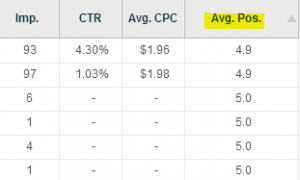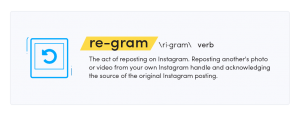Back in 2009 we were preparing for our first ever presentation to businesses on how social media will (dramatically) change the way that things will be done. It was at this time that we mapped out our own process of how to approach social media and its integration into any business…
…and our very simple 4 step process was born, with which came a chance, yet very important caveat! Below we have outlined this process and showcase why it’s vital that your business continues to apply this:
1: Awareness
…of what social media actually is, the social media platforms, what they do, who uses them and what for.
In 2009 there was little in terms of evidence and case studies, yet in 2015 you’re literally overloaded with them. This in itself poses a similar problem by making it difficult for your business to find ones appropriate to you.
Do you need a presence on LinkedIn, a corporate page and Facebook group or pages? Would setting up a Twitter customer service channel be relevant for your business? Do you need to utilise Pinterest, Instagram, SnapChat or Reddit to target consumers? And how will these work alongside Google + to optimise SEO? Social media has become a very complicated landscape.
But it needn’t be. Start simple – investigate the platforms you need to be utilising based upon your target audience and business objectives. If you’re a B2B business how are your choices going to differ from those of a B2C business? What collateral do you have to engage your audiences and how do you get this to them?
As a simple rule, if you’re B2B then your focus needs to be on some, or all of, the following: LinkedIn, Twitter, Google+ and should be backed up by a Blog and/or regular content.
The main difference for B2C is that you switch your LinkedIn focus to Facebook, and look at the merits of Instagram and/or Pinterest.
2: Strategy
So you now understand the platforms and the ones that you’re going to be using, it’s crucial that you get your social media strategy in place. This can be a simple sheet of A4 or a full-blown paper for the Board, but no matter what, this is absolutely vital unless you wish to become the stereotypical ‘rudderless ship’!
So what does you strategy need to consider?
Why — business objectives
Where — the specific platforms
What — are you using them for? Business development, recruitment, client services…
Who — team members
When — frequency
How — the process for getting content and collateral out there
…and crucially, what realistic measurements need to be in place to determine success. Think about brand awareness, increased contacts, mentions, increased web traffic, cost savings etc., and how you’re going to track them (we’ll cover this in another post on monitoring tools).
3. Readiness
In the first instance it’s well worth sharing your social strategy with everyone in the business (at least in basic format) so they understand what’s happening and what part they’re going to play. This helps to engage staff/team members and makes them feel included. Let them know how important their role will be to ensure everyone gets on board and pulls in the same direction.
You then need to prepare everything you’re going to need, such as resources, collateral, implementation plan (to put the strategy into action), do’s and don’ts (a social media policy) and you’ll need to train people and get a launch date in site.
4: Engage
Taking all of the above into account, you can now engage in your social media activities with confidence, transparency and direction. The key things to understand, like any communication method, is that it’s not an exact science and thus you need to keep monitoring results, addingchanges and making adjustments based upon the outputs.
What you also need to bear in mind is that ‘little and often’ will win over ‘more and infrequent’ i.e. don’t just have a big launch and expect people to come flocking…drip feed relevant posts, tweets and updates to keep on people’s radar’s.
With this in mind, focus on making social activities part of the everyday, and make them habitual/regular.
So what’s next? Start the process back at Awareness (regularly)…social media is a rapidly evolving entity and so what’s good in January 2015 may need re-evaluating in May 2015. Ensure you keep the cycle going and tap into case studies, blogs and news feeds to keep your finger on the pulse.
We know what you’re thinking….what was the caveat? Well, when you take Awareness, Strategy, Readiness and Engagement you have the acronym ASRE. The greatest business mistakes and social media fails come when organisations excitedly/hastily apply ‘Readiness’ before they have their ‘Strategy’ and set up a presence and announce it to the world without having a plan of what to do next…and this changes the acronym order.
The outcome sums up nicely why you must ensure you have your ‘Strategy’ in place before you even think about ‘Readiness’. Follow the above steps to ensure that you don’t make an AR*E out of your organisation!
(247)
Report Post





